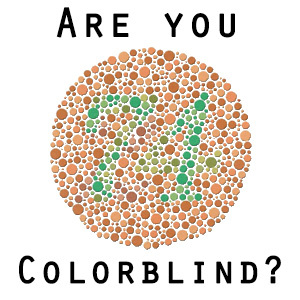
In 1916 Dr. Shinobu Ishihara, a research doctor for the Japanese Imperial Army, was tasked at developing a test to identify soldiers who experienced certain levels of color deficiency. Working alongside a colorblind assistant, Dr. Ishihara developed a complex, but simple, group of cards with very precise colors, shapes, and purposes for a new colorblindness test. His initial sets were each handmade and used exclusively by the Japanese army until 1917 when it was published worldwide as the Ishihara Color Vision Test.
Have you taken an Ishihara colorblind test before? Try it online: www.color-blindness.com/ishihara-38-plates-cvd-test
As an occupational health provider, Mobile Health offers the Ishihara Color Vision Test for employers who have vision-sensitive positions requiring a certain degree of vision correctness. These exams can be done as part of a pre-employment health screening or annual review.
Colorblind itself is a misleading term for this medical condition. Although many might understand colorblindness as someone who only sees a grey scale of black and white, color deficiency actually refers to the condition where only certain colors and hues are not seen.
A colorblind person may see all colors of the spectrum, but may just have difficulty seeing every shade of blue or red for example. Because of this wider interpretation of colorblindness, it is believed that 8% of men have some sort of colorblindness, but only .05% of women. And of all colorblind people, 99% suffer from Deuteranopia (red-green color deficiency).
Understanding that a certain percentage of the Japanese male conscripts were experiencing colorblindness, and most of them had a similar deficiency, Dr. Shinobu reviewed the prevailing test of the time by Dr. Stilling from 1878 and worked on a new update. His changes still kept the signature pseudoisochromatic plate style developed by Dr. Stilling, but updated certain characteristics to improve accuracy.
Even though the Ishihara test has been the industry standard around the world for nearly 100 years, many new tests are now available following new research and technological advances. Another popular method is known as an arrangement test. These were developed by Dr. Farnsworth in the 1940’s and asks the patient to arrange a series of colored items in hue order. The test can be made up of items such as colored wooden blocks or done electronically with computer display monitors.
A more recently developed test is an RGB Anomaloscope test that simply asks patients to match 2 colors. A sample color is shown and the patient is asked to identify the same color using a selection slider. If no possible match is found, the patient will answer as such.
If you do decide to take a colorblindness test, whether done recreationally or for a job or health concern, make sure to consult a medical professional. Different computer monitors have different calibrations and physical items such as painted paper and wood can fade over time. These variables can interfere with the results and provide incorrect data.
